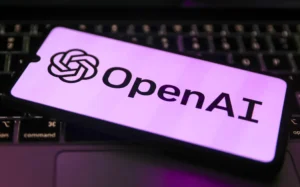OpenAI has officially released GPT-4, its latest and most powerful generative AI model, setting a new benchmark in artificial intelligence development. Building on the capabilities of its predecessor, GPT-3.5, the new model showcases major improvements in problem-solving, contextual understanding, image interpretation, and advanced reasoning. The release has quickly sparked global attention, with industries, developers, and tech enthusiasts exploring its far-reaching implications.
With GPT-4, OpenAI has redefined what’s possible with AI—paving the way for more precise, adaptable, and creative tools across education, healthcare, finance, legal services, and content creation.
What’s New in GPT-4?
GPT-4 introduces several key upgrades that significantly enhance the performance and utility of large language models. Among the most notable features are:
-
Multimodal Input: Unlike previous models limited to text, GPT-4 can process both text and image inputs, enabling it to describe photos, interpret diagrams, and solve visual puzzles.
-
Greater Contextual Memory: GPT-4 can handle a much larger context window, allowing it to process and retain up to 25,000 words at once—ideal for analyzing long documents or writing comprehensive reports.
-
Improved Accuracy and Reasoning: The model exhibits stronger logical consistency, reduced hallucinations (false information generation), and better performance on standardized tests and professional benchmarks.
-
Multilingual Capabilities: GPT-4 demonstrates advanced fluency in over two dozen languages, outperforming earlier models in translation, summarization, and cultural nuance.
-
Creative and Technical Versatility: It can compose songs, write scripts, draft code, design websites, and more—enabling a wider range of applications for users and developers.

How GPT-4 Transforms Key Industries
GPT-4’s advanced capabilities are expected to influence nearly every sector. For instance:
-
Education: Teachers and students can use GPT-4 to generate personalized study materials, summarize academic texts, and explore complex concepts interactively.
-
Healthcare: While not a substitute for licensed professionals, GPT-4 can help doctors and researchers draft medical reports, analyze literature, and streamline administrative tasks.
-
Law: Legal professionals can use the model to review contracts, generate case summaries, and assist with legal research more efficiently.
-
Finance: Analysts and consultants can leverage GPT-4 for writing investment reports, evaluating financial trends, or automating client communications.
-
Software Development: Developers benefit from more accurate code generation, debugging assistance, and software documentation.
These examples only scratch the surface of GPT-4’s cross-industry potential.
ChatGPT Plus and Integration with Microsoft
As part of its rollout strategy, OpenAI made GPT-4 available through its ChatGPT Plus subscription plan, priced at $20 per month. Users gain access to the new model through ChatGPT, where they can test its capabilities directly in real time.
Additionally, OpenAI has deepened its partnership with Microsoft. GPT-4 now powers several Microsoft products, including Bing Chat and tools within Microsoft 365 Copilot, bringing AI directly into apps like Word, Excel, and Outlook to enhance productivity for millions of users.
Limitations and Ethical Considerations
Despite its groundbreaking features, OpenAI acknowledges that GPT-4 is not infallible. It may still produce biased, misleading, or inappropriate responses under certain conditions. To address this, OpenAI has implemented safety improvements, extensive training with human feedback, and collaborative efforts with researchers and policymakers.
The company also urges users to verify critical outputs, especially in high-stakes contexts such as medicine, law, or finance, and continues to call for responsible AI deployment and transparent regulation.
Looking Ahead: The Future of Generative AI
GPT-4 is more than just a model—it’s a foundation for the future of human-AI collaboration. Developers are already building plugins, custom apps, and interfaces on top of the GPT-4 API to tailor the technology to specific needs. OpenAI also hinted at continued iterations and more interactive tools that could include real-time video understanding, advanced memory, and persistent user customization.
With the global spotlight on generative AI, GPT-4 positions itself as a transformative force that could shape how we work, learn, and innovate for years to come.
Conclusion: A Landmark Moment in AI Advancement
The release of GPT-4 represents a defining moment in the evolution of artificial intelligence. As the model begins to integrate into daily life through applications and services, it promises to revolutionize how humans interact with technology—making processes faster, smarter, and more intuitive than ever before.
OpenAI’s bold leap forward not only reaffirms its position as a leader in AI innovation but also sets the stage for the next generation of tools that could fundamentally reshape society.






